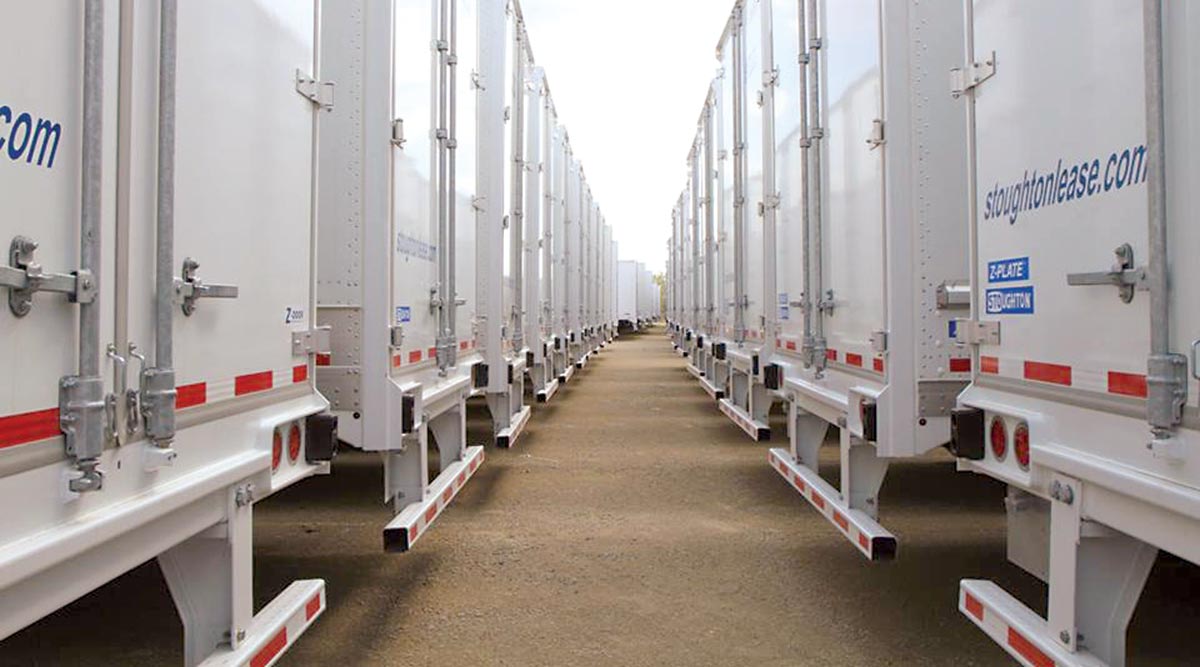Senior Reporter
Trailer Shipments Set Record as 2015 Orders Stay Strong

New trailer orders in the United States reached 315,000, the second-highest annual total, while a growing backlog pushed total shipments to an annual record, ACT Research reported.
Orders were 315,951 for 2015, down 11% from 2014’s record total of 356,712. However, shipments rose to about 307,000, squeaking past the previous high set in 1999, according to ACT analyst Frank Maly.
He said the “missing piece” in the shipments story is how the orders backlog grew year-over-year.
“2014 was the highest year for orders, and year-ending 2014 backlog was almost double that of year-end 2013. So, the backlog actually grew slightly [in 2015] from 2014, while shipments reached an all-time record.”
The backlog currently stretches into the third quarter, he said.
FTR analyst Don Ake put orders at 313,000 for the full year and agreed that shipments set a record.
“It all has to do with ordering cycles,” he said. “Orders for 2015 started in October 2014. Orders were inflated because of the fear of OEMs running out of capacity in 2015.”
He added: “We enter 2016 with the largest backlog ever, so we can expect another strong trailer year. The market continues to be driven by robust demand for dry and refrigerated vans. Consumer spending has been steady, and there is still some pent-up demand for vans.”
David Gilliland, vice president of national accounts at Great Dane Trailers, told Transport Topics that “2016 is shaping up very similar to 2015. Vans and refrigerated trailers will be strong, and our focus is on flatbed production, [especially] all-aluminum flatbeds.”
Larry Roland, director of marketing for Utility Trailer Manufacturing Co., said 2015 was the manufacturer’s fourth straight record year of production.
“2016 looks to be a very good year, although we are expecting a slightly softer year in terms of incoming orders,” he said.
ACT said that the orders total for December was down 38% compared with the 2014 period, when they soared to 43,548, the second strongest month in history. Analysts and trailer makers said they were not concerned with that decline, noting fleets had placed orders earlier in 2015.
“Backlogs of most trailer OEMs for 2016 leave a lot of space for carriers to book by the time December rolled around. It is a good example of how you can look too hard at the current month’s data and lose sight of the big picture,” said Charles Willmott, chief sales officer of the Strick Group.
David Giesen, vice president of sales at Stoughton Trailers, said December’s orders pointed to a return to normalcy.
He said December 2014 was abnormally high for dry van orders.
“A normal amount for that month should be in the 15,000-to-20,000 range. Last December was near 30,000. So, I would say we are just getting back to normal,” he said.
He added Stoughton achieved a record backlog in 2015.
“So I am not concerned, yet, with things slowly slowing down some,” Giesen said.
Gilliland said Great Dane is watching all of the economic indicators closely and, so far, the trailer market is doing better than the general economy. He said reasons for that include the low cost of borrowed funds, high trade-in values for used trailers, new regulations requiring electronic logging devices, which would limit driving time, and profitable trucking companies.
Willmott called any pessimism over the direction of the economy “distracting noise.”
He said the economy continues to march slowly out of the deep hole of the Great Recession, which began in late 2007 and was declared over in mid-2009.
However, Willmott cautioned that production capacity is climbing and will be about 350,000 trailers in 2016.
“In an industry that peaked at 307,000 [shipment] units in 1999 [and again in 2015], this is not good news for believers in pricing and profitability as a reflection of the supply-demand balance.”
Other trailer makers declined comment or did not respond by press time.

